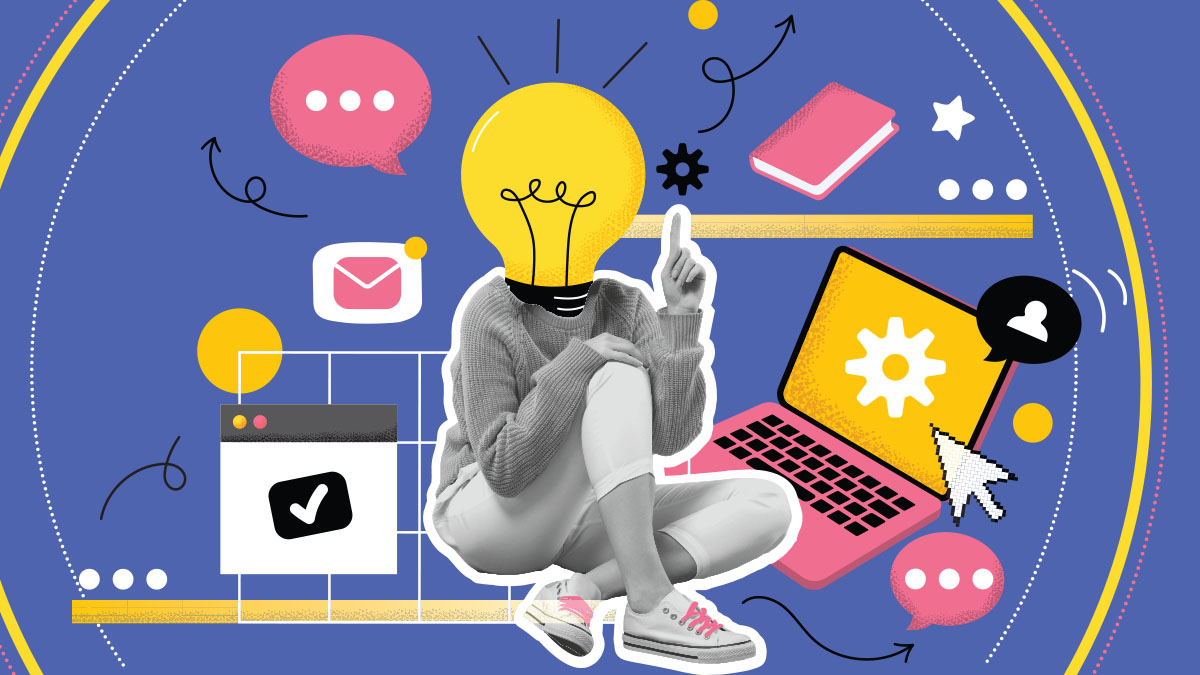
What Works: Tech Supports
Making today’s ed tech and digital tools work for your school community.
Topics: Technology, School Management
Since sudden first forays into the digital classroom, leaders have embraced educational technology and introduced high-tech topics to their schools.
COVID-19 brought tech use in K–8 schools forward rapidly. Suddenly, kids needed devices to continue their educations, and teachers and administrators faced a steep learning curve to stay on top of instructional leadership. Five years later, many of those tech tools are becoming embedded in classes. But how evenly do they contribute to student learning?
Principal magazine asked several administrators what technologies they use on a daily basis, how these technologies contribute to an equitable education, and what they do to enhance the skills students will need in the 21st century. Here’s what they said.

Leveling the Playing Field
Rachel B. Alberts, principal, Sunburst Elementary School, Layton, Utah
What digital or tech tools does your school employ in its general curriculum?
Students have 1:1 iPads. We use native Apple apps in all areas of the curriculum; iPads also have Microsoft apps. This allows students and teachers to have choices when selecting which tool best fits the purpose of the activity.
Why is it important to prioritize and integrate tech tools in the K–8 setting?
It increases student engagement, enhances peer collaboration, advances educational equity, and facilitates innovation and relevant 21st century learning. It encourages exploration between teachers and students.
How can technology help advance educational equity in classrooms?
For ELL students and students with learning disabilities, it levels the playing field. Because all students have equal access to tech, their projects are not impacted by their financial status or access to parent support.
How has your school been able to integrate 21st century tech skills into coursework?
Student-created podcasts connect to social studies and sciences. There are also student-created math tutorials, data binders, presentations, and student-created movies using iMovie and a green screen. There’s a student-driven newscast that enhances collaboration across grade levels.
How did you get started on a tech-centric curriculum, and what steps were involved?
We focus on building a culture for teachers and students that focuses on collaboration, personalized learning, relevant/rigorous learning, equal access, risk-taking, innovation, and application. We provide embedded, personalized, ongoing support.
What would you tell other principals who wish to help students and teachers use tech effectively?
Make the learning process engaging, embedded, and personalized for teachers, just as you would for students. Create a culture that encourages and celebrates risk-taking; it makes the learning process less intimidating.

Spreading Student Superpowers
Liz Garden, principal, Henry P. Clough Elementary School, Mendon, Massachusetts
What digital or tech tools does your school employ in its general curriculum?
Our students have iPads [and tools including] Seesaw and Canva. We have many classrooms that use Apple TV or interactive whiteboards. We also have students learn coding and have several Osmo robots they can use to practice.
How has your school been able to integrate 21st century tech topics into coursework?
We use several Project Lead The Way modules in a technology class that each grade attends once a week. We also embed our Portrait of a Learner “superpowers” that aren’t specifically tech topics but are important for kids to apply to technology use over the years.
What does your podcasting program teach students about tech and more generally?
Podcasting has helped kids see that there are many ways to amplify their voices. Students learned how to use microphones, mixing boards, and recording software; add intro and outro music; and embed sounds such as audience laughter and other sound effects. Deciding what to talk about on the podcast episodes helped students work on the writing process.
Are there any areas in which tech tools aren’t appropriate or helpful to student learning?
We need to find a balance where kids aren’t always on a screen or using an online program. We still need to teach kids to physically write instead of relying on typing or recording.
What would you tell other principals who wish to help students and teachers use tech effectively?
Continuously educate [yourself] on what tech is out there. Principals need to make sure they are aware of what might be helpful and what teachers might need support with. We can’t just stick a device in front of a kid or expect teachers to use a tech tool without weighing the pros and cons.

Balancing Online and Offline Skills
Fatima T. Lawson, principal, Highwood Hills Elementary, Saint Paul, Minnesota
Why is it important to prioritize and integrate tech tools in the K–8 setting?
Introducing tech tools early helps students develop essential skills such as navigating the internet, using software, and understanding online safety.
Why is digital citizenship important, and how do you enhance those skills in students?
Digital citizenship teaches students how to critically evaluate the information they encounter online, distinguish
between reliable and unreliable sources, and avoid spreading misinformation. Further, it instills values such as respect, protection of personal information, and empathy.
What would you tell other principals who wish to help students and teachers use tech effectively?
Focus on providing professional development, resources, and a culture of collaboration and experimentation. Ensure that technology integration is purposeful—enhancing learning rather than just adding screen time. Balance tech use with offline activities to ensure well-rounded development for students.

Teach kids to see Tech as a Tool
Shannon Hamm, principal, Circle Center Grade School, Yorkville, Illinois
What digital or tech tools does your school employ in its general curriculum?
We use digital tools that go with our curricular resources and intervention programs such as Lexia, IXL, and MobyMax.
Why is it important to prioritize and integrate tech tools in the K–8 setting?
Our students are exposed to more than we know. We need to make sure we are integrating tech appropriately for students at the K–3 level so it is a tool, not the primary source.
What controls do you have on tech tools to ensure they are used for learning?
We follow the Student Online Personal Protection Act laws, and our district has become more rigid about blocking apps and other extensions that take away from learning.
Why is digital citizenship important, and how do you enhance those skills in students?
We start teaching this from kindergarten. Students need to know they have to take responsibility for what they search, how they use technology, and that they ensure the privacy of others. Our biggest issue is when students get on the bus [and] take pictures or videos of friends.
Are there any areas in which tech tools aren’t appropriate or helpful to student learning?
There is a balance between using technology as a tool and overusing it. Our students will go home and watch hours of YouTube videos or play video games, so we want to make sure that when they use technology in school, it is purposeful.
What would you tell other principals who wish to help students and teachers use tech effectively?
Research the tools students misuse and find ways to support teachers. Our teachers have access to GoGuardian, which allows them to see what students are doing on their computers. They can immediately address students who are off-task or have too many tabs open.

Use Tech With a Purpose
Lindsay Gooditis, principal, Franklin Township School, Quakertown, New Jersey
What digital or tech tools does your school employ in its curriculum?
Franklin Township is a 1:1 district for student devices, and every classroom has an interactive display board.
Why is it important to prioritize and integrate tech tools in the K–8 setting?
Technology enables teachers to differentiate in the classroom so that every student’s educational needs are met, [and it] helps students develop collaboration and critical thinking skills.
How can technology help advance educational equity in classrooms?
Online platforms and adaptive learning tools include augmentative communication devices and learning tools for multilingual learners. Socioeconomic gaps close when all students have access to the same technology.
How has your school been able to integrate 21st century tech topics into coursework?
Franklin Township has a “Road to Readiness” class [that uses] technology to prepare students for life, college, and careers. Fifth grade students perform energy audits at the school and use their findings to propose changes that make Franklin Township a better steward of the environment.
What do EV engineering, conservation, and hydroponics programs at your school teach?
In the Electric Vehicle Challenge, students design and build an electric vehicle and have a race. In a Sustainable Jersey for Schools program, students will discover the benefits of hydroponics, such as water conservation and faster plant growth.
What would you tell other principals who wish to help students and teachers master tech use?
Technology needs to be used with a purpose. [Education consultant Sonny] Magana says that a song’s melody is enhanced by the harmonies. Good teaching is the melody, and good technology integration adds the harmony.

Differentiate to Facilitate Growth
Farrell Thomas Sr., principal, Waterset Charter School, Apollo Beach, Florida
What digital or tech tools does your school employ in its general curriculum?
We are 1:1 with devices and use Apple products and iPads. We focus heavily on a lot of instructional software programs such as ST Math, i-Ready, Progress Learning, IXL, Khan Academy, Lexia, and Amira.
Why is it important to prioritize and integrate tech tools in the K–8 setting?
We spend a great deal on these programs, and they each have a prescribed use and intended purpose based on their different content areas. The ultimate goal is to use these resources to help facilitate growth—usually moving lower-tier students to on-target—and realize improvement in student academic achievement.
What would you tell other principals who wish to help students and teachers use tech effectively?
The issue becomes finding the right balance between reliance on ed tech programs and teacher intervention and instruction. [You need] differentiation in instruction to reach students where they are and elevate them to a higher level—either on-track or above-track. Oftentimes, the high-flying students get missed and little growth happens with them.

Keep an Adult Presence
Paola Torres, Lower School director, American School of Paris
What digital or tech tools does your school employ in its general curriculum?
We are 1:1 with devices and use Apple products and iPads. We focus heavily on a lot of instructional software programs such as ST Math, i-Ready, Progress Learning, IXL, Khan Academy, Lexia, and Amira.
What digital or tech tools does your school employ in its general curriculum?
Students use iPads and Chromebooks to document their learning [in] personal portfolios. We also have 3D printers, digital microscopes, and other tools that allow students to explore using an inquiry-based approach.
Why is it important to prioritize and integrate tech tools in the K–8 setting?
When students are offered engaging experiences that involve technology, we give the message that technology has a purpose and that the responsible use of technology is critical for the well-being of students.
What controls do you have on tech tools to ensure they are used for learning?
Students who are taught to use technology responsibly are more likely to do so than those who are given a device with no teaching involved. An adult presence in the digital life of the student is another important element.
How can technology help advance educational equity in classrooms?
For children with special needs, technology can play a crucial role. For example, a student may need a device to communicate if they are not able to communicate in a “typical” way.
How has your school been able to use digital tech to reach a diverse student body?
Our students come from different countries; each student recorded their name using their preferred pronunciation. Our goal is for all students to be called by the name they identify with.
Are there any areas in which tech tools aren’t appropriate or helpful to student learning?
When tech tools are used as a replacement, the child can be at a disadvantage. Children’s early presence in social media creates a huge distraction, and at times, a big safety concern.
What would you tell other principals who wish to help students and teachers use tech effectively?
Role modeling is critical. Set up a system for teachers to access help. I recommend teachers become as knowledgeable and skilled as possible with all tech-related aspects of learning.

